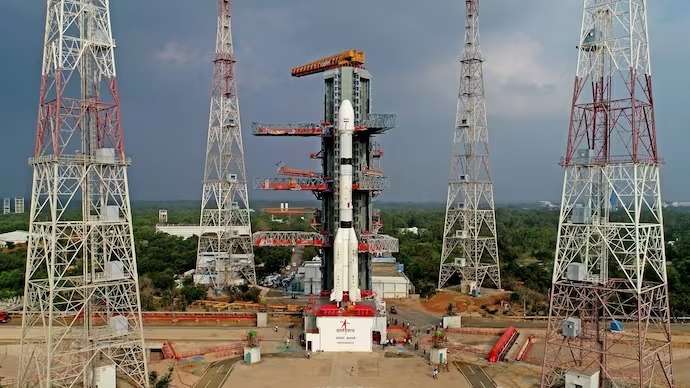Isro set to launch INSAT-3DS on GSLV-F14 today

February 17, 2024
Isro set to launch INSAT-3DS on GSLV-F14 today
"Get ready for the highly-anticipated launch of INSAT-3DS by Isro on the GSLV-F14 rocket. This advanced satellite will greatly enhance India's oceanic observations, providing valuable data and insights. Don't miss this groundbreaking event!"
"Exciting news from India's space program as Isro prepares to launch the highly-anticipated INSAT-3DS satellite today. The satellite, carried by the powerful GSLV-F14 rocket, will revolutionize India's oceanic observations and provide valuable data for weather forecasting, disaster management, and more. Join us as we delve into the significance of this launch and the groundbreaking advancements it will bring in satellite technology."
India is once again making history in the world of space exploration with the launch of INSAT-3DS today. The Indian Space Research Organization (Isro) is all set to launch this advanced satellite into orbit on the Geosynchronous Satellite Launch Vehicle (GSLV-F14) from the Satish Dhawan Space Centre in Sriharikota.
This highly-anticipated launch marks a significant milestone for India's space program, as INSAT-3DS will greatly enhance the country's oceanic observations and provide valuable data and insights. The satellite is equipped with state-of-the-art technology, making it a game-changer in the field of remote sensing and earth observation.
But what makes INSAT-3DS so special? Let's take a closer look at its capabilities and how it will benefit India and the world.
One of the key features of INSAT-3DS is its ability to monitor ocean surface winds, which plays a crucial role in weather forecasting and predicting cyclones and other extreme weather events. The satellite will also provide data on sea surface temperature, ocean currents, and wave heights, which are vital for understanding ocean dynamics and their impact on weather patterns.
In addition to oceanic observations, INSAT-3DS will also enhance India's monitoring of land and atmospheric conditions, providing valuable data for disaster management and agriculture. Its advanced sensors and instruments will give a clearer picture of crop health, soil moisture, and air quality, helping farmers and policymakers make informed decisions.
The satellite's launch is also significant because it will be carried out by the GSLV-F14, a powerful rocket developed by Isro. This will be its first operational flight, further bolstering India's self-reliance in the field of space technology. The successful launch of INSAT-3DS will add another feather to India's cap, showcasing the country's expertise in launching advanced satellites.
This launch is a testament to Isro's commitment to using space technology for the benefit of humanity. The data and insights gathered by INSAT-3DS will not only help India but also aid in global efforts towards sustainable development. The satellite's capabilities make it a valuable asset for research and collaboration with other countries in areas such as climate change and disaster management.
The launch of INSAT-3DS also opens up possibilities for new applications and services that can be developed using its data. From improving navigation systems to enhancing communication networks, the potential is limitless.
As we eagerly await the launch, it is important to acknowledge the hard work and dedication of the team at Isro who have made this mission possible. It is a testament to their perseverance, determination, and unwavering spirit to push the boundaries of space technology.
The launch of INSAT-3DS is not just a significant event for India's space program but for the entire world. It is a step towards a better understanding of our planet and its oceans and a giant leap towards a more sustainable future.
So join us as we witness this groundbreaking event and celebrate India's achievements in space exploration. Get ready for INSAT-3DS, a satellite that will enhance our understanding of the world we live in and pave the way for new frontiers in space technology.

